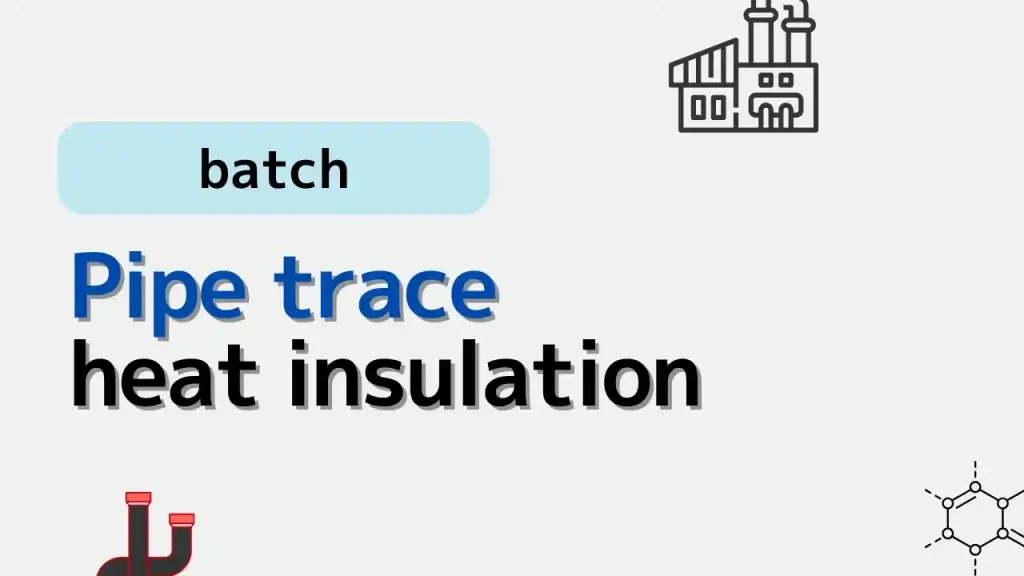Trace heat insulation is essential in batch plants to prevent freezing, maintain process temperatures, and ensure smooth operation. This article explains why trace heating is needed, typical applications, and key considerations when implementing insulation work.
Introducing articles from plantengineering.com.
There are several types of insulation for plant piping.
However, batch plants are mostly trace.
I don’t use bolt-on jacketing
temperature is not high
The handling temperature of batch plants is not high.
It feels very high when it exceeds 100℃.
Trace is less effective at keeping you warm than a jacket, but it’s still good enough.
Requires installation and removal
Traces are easy to install and remove
Bolt-on jackets can also be installed and removed, but they are generally heavier.
When piping or tracing becomes clogged, it is not possible to easily inspect it.
Tracing has a simple structure, so it is useful at plant sites.
cheap
Traces are cheap. Of course it’s cheaper than a bolt-on jacket.
In batch plants where temperature needs are not high, the low cost of tracing is attractive.
Conclusion
Trace heat insulation is a critical task in batch plants that safeguards equipment and product quality. Careful design, material selection, and maintenance ensure its effectiveness and long-term benefits.
